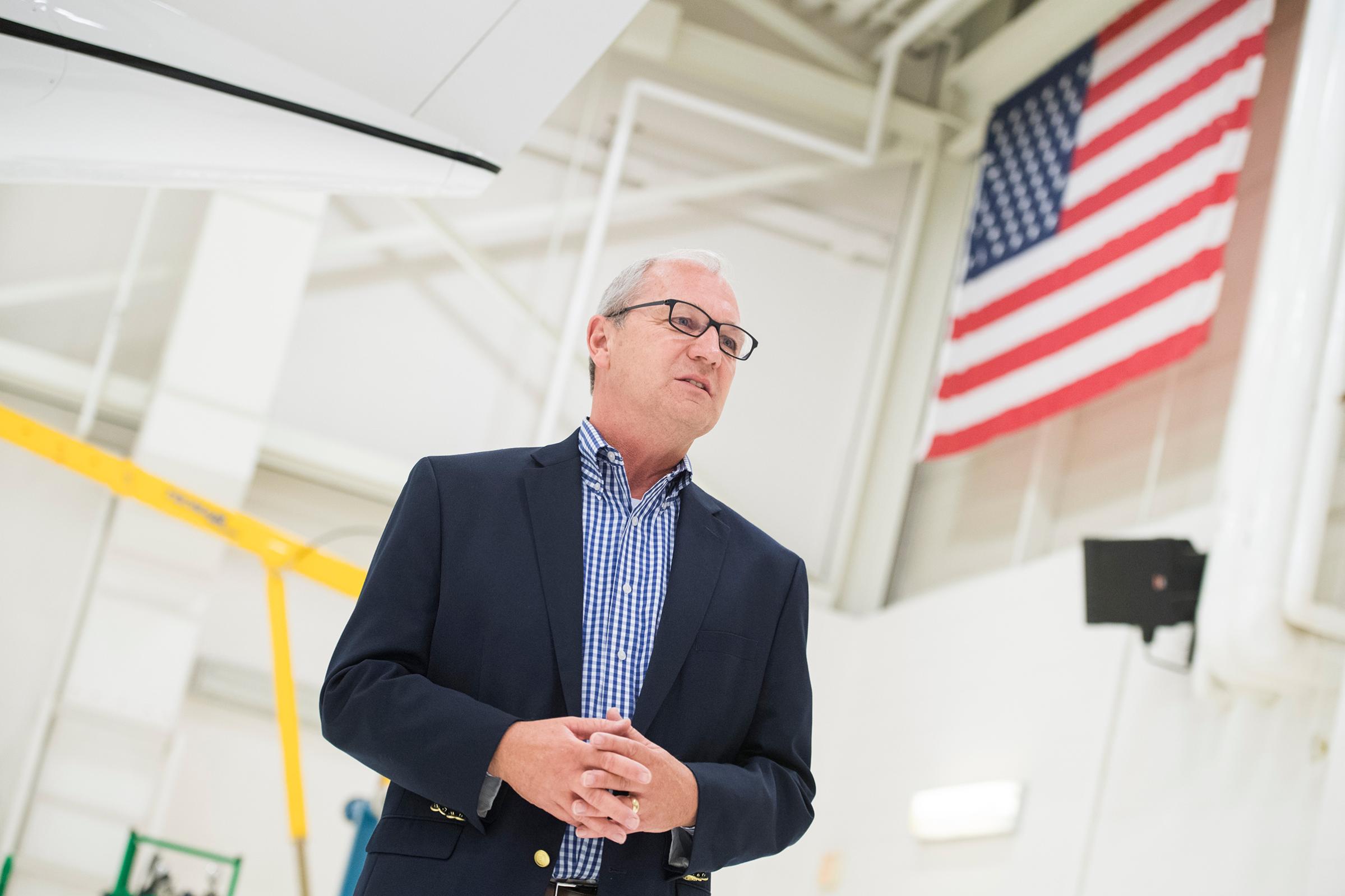As Air Force One sped from Billings, Mont., to Fargo, N.D., on Sept. 7, President Donald Trump dipped into the press cabin to casually announce that he was prepared to slap another quarter-trillion dollars in tariffs on Chinese goods. “There’s another $267 billion ready to go on short notice, if I want,” Trump declared.
Back on the ground, Republican strategists were soon beside themselves. The GOP is fighting to pick up Senate seats in both Montana and North Dakota, key contests that will help determine whether the party maintains control of the chamber after November’s elections. Some $20 million in Montana exports to China are already caught up in Trump’s ongoing trade war, and $31 million worth of North Dakota’s Chinese exports are at risk, according to a U.S. Chamber of Commerce analysis. The White House never clarified exactly what Trump meant by his Air Force One remark, but any escalation of the trade war could hurt the GOP’s odds in those agricultural states.
The threat captured a dilemma Republicans face as they march toward Election Day. On the one hand, they need Trump on the road, tapping his popularity with the base to drive enthusiasm and turnout in November. On the other, the President’s reflexive need to make himself the center of attention and his tendency to say anything at any time can hurt candidates from his party. And you never know how he’s going to behave. Says one Republican official: “You can’t trust the President on anything.”
The result: it’s no longer just the House that could tip into Democratic hands this November; polls in the states now suggest that the Senate is in play too.
It shouldn’t be. On paper, the Senate contests this year heavily favor the GOP. For starters, Republicans are defending just nine seats, compared with the Democrats’ 24, plus an additional two for independents who caucus with them. And 10 seats held by Democrats seeking re-election are in states Trump won in 2016, half of them by double digits.

But on the ground, things don’t look so good for the GOP. Of those 10 seats, Republicans are in striking distance of winning just two–and even those races are within the margin of error. At the same time, three of the nine Republican-held seats–in Nevada, Arizona and Tennessee–could be pickup opportunities for Democrats. And now Republicans in Washington are sounding the alarm that a fourth, the one held by Senator Ted Cruz of Texas, could be snatched up by the charismatic Democrat Beto O’Rourke. Buying ads in Texas’ 20 media markets to try to save Cruz could be pricey.
The polls showing these races narrowing also point to the possible source of the problem for Republicans: Trump is increasingly losing ground with college-educated voters, especially female ones. In some recent polls, his approval rating has fallen into the high 30s from the high 40s he bragged about at the start of September.
Democrats aren’t ordering champagne yet, despite positive polling numbers. Party strategists recognize that they need to do everything right if they are to run the table and win difficult Senate races in costly states like Florida and conservative ones like Missouri. And Trump’s unpredictability can upend Democrats’ plans as much as Republicans: there is simply no telling what the mercurial Trump may get up to between now and November. For their part, many GOP officials are confident that a strong economy will lift their candidates to victory in the Senate.
But Trump has done himself and his party few favors as the fall campaign heats up. A harsh op-ed in the New York Times, credited to an unnamed senior Administration official, and the latest book by journalist Bob Woodward both paint a picture of chaos inside the Trump orbit and a President increasingly isolated from his top aides. All the while, special counsel Robert Mueller’s investigators are stacking up guilty pleas and convictions.
And while Trump’s imprimatur was valuable to Republican candidates in the primaries, it is looking like less of an advantage in November. Party strategists lament that Trump’s biggest edge comes in places with low numbers of college-educated voters–and those places often are not the metropolitan areas where Trump likes to host freewheeling, train-of-thought rallies to rant against his Attorney General, the Department of Justice and what he calls “the fake-news media.” He likes to mock predictions that a “blue wave” looms this November, instead promising that a “red wave” of Republican victories is coming. GOP strategists worry that by doing so, Trump is depressing enthusiasm among Republicans who may believe the President is correct and their votes aren’t needed.
Whatever the effect of Trump’s campaigning, there will be more of it, as the President plans to spend more time on the road, believing he can boost the fortunes of fellow Republicans. During the six weeks leading to Election Day, the White House has scheduled at least 40 days on the trail. Which means one way or another, Trump will likely be a deciding factor in who wins control of the Senate in November.
More Must-Reads from TIME
- Inside Elon Musk’s War on Washington
- Meet the 2025 Women of the Year
- The Harsh Truth About Disability Inclusion
- Why Do More Young Adults Have Cancer?
- Colman Domingo Leads With Radical Love
- How to Get Better at Doing Things Alone
- Cecily Strong on Goober the Clown
- Column: The Rise of America’s Broligarchy
Write to Philip Elliott at philip.elliott@time.com